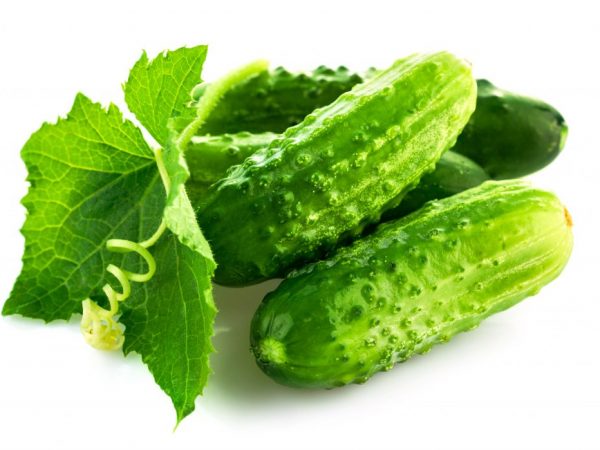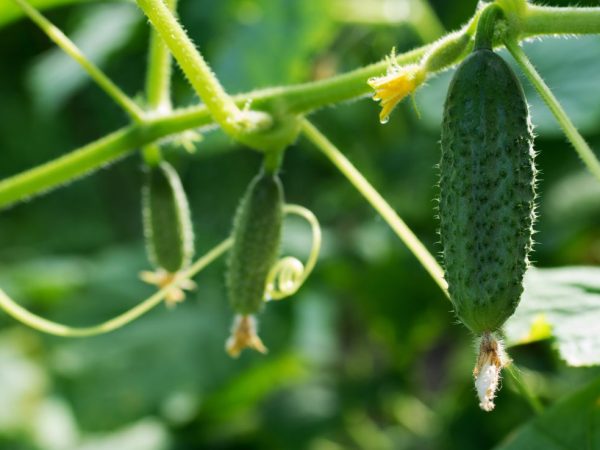Description of Dutch cucumbers
Dutch cucumber varieties are in high demand among domestic gardeners and vegetable growers. The desire to try all the best varieties, to choose from them the one that suits the best and meets the necessary requirements - these are the tasks that those involved in the cultivation of this crop set themselves. Dutch cucumbers have proven themselves on the good side, their seed material is reliable, in most cases it is self-pollinating, and this is very important for agricultural technology in greenhouses.

Description of Dutch cucumbers
Benefits of varieties
Dutch cucumbers have many advantages.
The main advantage of Dutch seed is that it is reliable. By purchasing such seeds, you can be completely sure that they will give excellent shoots.
The advantages of these cultures are obvious:
- both varieties and hybrids of the named selection are distinguished by high productivity;
- cucumbers have excellent resistance to most diseases;
- it is easy to find both self-pollinated and bee-pollinated species on sale;
- seeds are suitable for growing in both open and closed ground;
- fruits have excellent taste and are not bitter;
- fruits are almost the same size, have a regular and neat shape;
- most of them are suitable both for fresh consumption and for pickling.
Domestic gardeners believe that Dutch cucumbers are distinguished by their quality characteristics. The combination of excellent qualities allowed them to conquer the world market.
When purchased, there are only a few seeds in a bag. This can be easily explained by the fact that the culture gives powerful and climbing branches, the fruits form whole clusters, so they need to be planted rarely: no more than 4 seeds per 1 m² of plot.
Most popular varieties
In the trading network, seeds of Dutch origin are represented by the widest assortment. You should pay attention to the best varieties that have managed to win love and are very popular with domestic gardeners:
- Angelina F1 is a self-pollinating variety of very early selection. Cucumbers are distinguished by their delicate taste and juiciness, their length is up to 15 cm. They are eaten fresh, suitable for making salads. They are characterized by increased resistance to painful conditions.
- The artist is grown in open and closed ground, bears fruit in 1.5 months after the appearance of the first shoots, has a high yield. It is desirable to grow the variety on a trellis, which greatly facilitates the collection of fruits.
- Dolomite F1 - the earliest fruits, they are suitable not only for fresh consumption, but also for conservation. The color of the fruits is deep green, they are covered with small inconspicuous tubercles, which distinguishes them from other varieties of cucumbers. The bush is characterized by medium vigor, the fruits are open, the harvest is clearly visible - it is easy to harvest. The hybrid is capable of regeneration, quickly recovers from unforeseen weather disasters and damage.Ideal for preservation, the fruit remains firm and crispy after processing. The plant bears fruit throughout the growing season, is resistant to most harmful microorganisms, is grown in greenhouse conditions and open field conditions.
- Hector F1 is a fairly compact crop, but this does not prevent it from bringing good yields. Cucumbers are dark green in color, cylindrical in shape, stored for a long time and do not change color, have a dense structure and excellent taste. The fruits do not lose their qualities after canning. The seeds are not affected by diseases, almost do not depend on a sharp change in air temperature and unfavorable weather conditions.
- Bettina F1 - small fruits the size of a gherkin, have the correct shape, delicate taste and are a real decoration of the festive table. Cucumbers are covered with large tubercles, they have the shape of a cylinder. The variety is very early, it is recommended to grow it in the winter-spring period. It bears fruit well even in low light conditions, has good transportability, is not afraid of temperature extremes, and is resistant to pests and diseases.
- German F1 has a high yield and early ripening. The variety is self-pollinating, it can be grown both in greenhouse conditions and in the open field. The fruits are suitable for consumption not only fresh, but also for pickling. Cucumbers are deep, dark in color, covered with large tubercles. Proper care ensures fruiting throughout the growing season.

A good harvest will be ensured by the purchase of quality seeds
It is impossible to list all the Dutch cucumber varieties, there are a lot of them. And they are all interesting in their own way. The grower should determine which of them will be the best option for him, because you need to take into account local conditions. The right choice will come with experience, as each variety has clear benefits.
Seeds
Dutch cucumber seeds are treated with fungicides, so they are protected from many diseases. Many of the varieties and hybrids are self-pollinating and gardeners do not need to attract insects to pollinate them. Summer residents use Dutch seed material in open field conditions, this allows you to achieve a good result.
An experienced gardener understands that the purchase of quality seeds is only a small part of the whole process of growing cucumbers. Without proper sowing, regular maintenance, consisting of watering and fertilizing, loosening the soil and many other components, you will not be able to get the best results.
Sowing rules
The sowing scheme of seed from Holland practically does not differ from the planting of cucumbers of domestic selection. You just need to follow the sequence and adhere to the deadlines:
- sow seeds in seedling boxes in the last decade of March;
- maintain the distance between the seeds (2-3 cm);
- after sowing, prepare cubes and substrate from manure, soil, sand and fine peat;
- treat the soil mixture with Redomin-Gold fungicide and cover with polyethylene.
Seedlings are carefully transplanted (dived) into cubes. After 30 days, the seedlings are transplanted into a greenhouse.
Landing
Dutch cucumbers are usually planted using the square planting method. Before this, you must carry out the following activities:
- Dig up and loosen the soil.
- Dig grooves 30-40 cm deep, where the seedlings will be planted.
- Maintain a distance between the beds of at least 80 cm.
- Lay manure on the bottom of the dug trenches with a ball of 25-20 cm.
- Plant seedlings according to the 50 x 50 scheme.
After planting, antennae are cut off from several plants. The appearance of new tendrils on the same crops indicates that it is necessary to carry out the first root feeding of cucumbers.
Conclusion
Modern gardeners and summer residents are happy to try all the innovations in agricultural technology: new types of farming, sowing schemes, bred varieties and hybrids.Dutch breeders' cucumber seeds have a number of advantages, so they are in high demand in the domestic market. The yield of a crop largely depends on the quality of the seed, its reliability and prospects. Dutch cucumber varieties have excellent taste, optimal size, rich color and immunity to many diseases.


